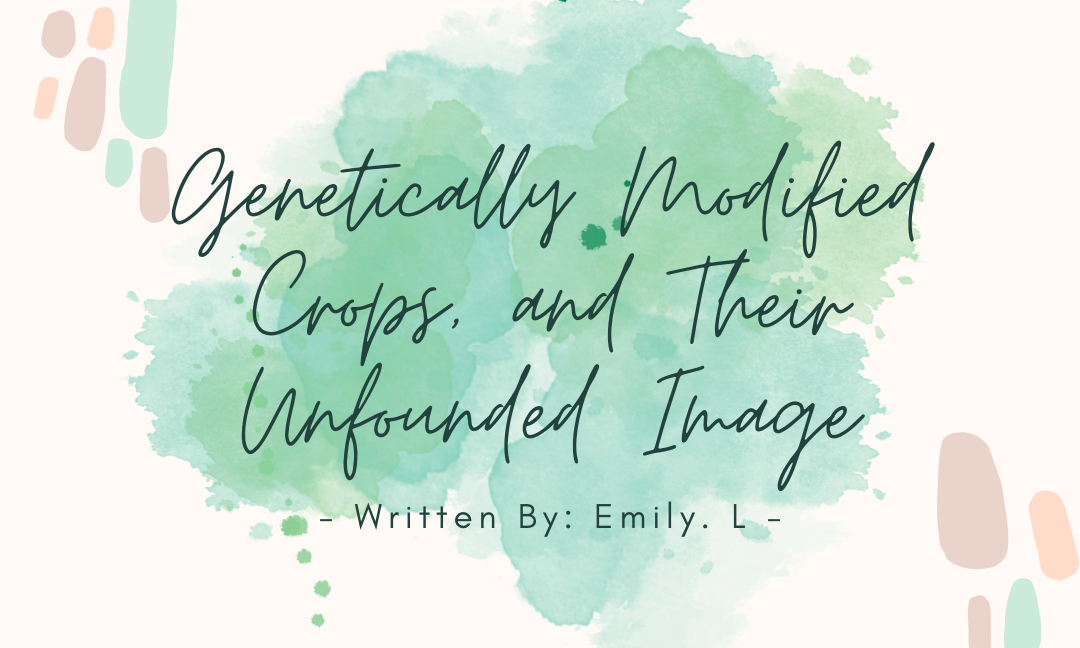Written By: Emily L.
Edited By: Ravjyot Ughra
Designed By: Jiya Mehta
Published By: Miriam Alonge Wato
DISCLAIMER: This article was researched and written independently by a youth blog writer, and is not reflective of the viewpoints of Seeds of Diversity or Youth in Food Systems.
Introduction

In the modern world of the 21st century, whether one chooses to stroll through the towering alleys of the local supermarket, or take a browse through their preferred online grocery/food delivery site, one should almost expect to be inundated with the vibrant colours and eye-catching exclamations of food advertisements. One cereal brand announcing their brand new marshmallow shapes, another bag of milk proudly brandishing their farming history, and a third candy bar promising to catch the love of your life with their flavour this coming Valentine’s day; these marketing tactics have essentially melded and become one with the background noise of our present reality. Yet, like wildfire gossip, their seemingly shallow influence has unknowingly changed our consumption practices.
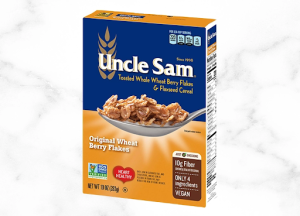
Here is an example of a common food ad theme: health. We all have likely seen some version of this, a food item with some fancy text on its packaging saying “No Fat”, or “Sugar free”, or even something as elaborate as “Includes 4 different whole grains!” You can really see the effort they’re putting in the last one, huh. Nevertheless, since at least the Victorian era, general society has been growing increasingly attentive towards health; advertisements have thus changed over the decades to cater to this worry, sometimes even feeding it.
A newer extension of this age-old health trend is the “natural” movement, for lack of a better term. Over the past few years, many individuals have found solace in bringing “more natural” aspects into their life: natural remedies, essential oils, and the key here, organic food.
According to Britannica, organic food is food that has been grown without the use of synthetic chemicals – man-made pesticides, herbicides, and even fertilizers – as well as completely excluding GMOs (genetically modified organisms).
While the exclusion of synthetic chemicals can be rather reasonably attributed to the toxicity and environmental impact of select types, present day fear of GMOs and genetically edited crops is completely baseless.

Being constantly fed food tags that proclaim “Non GMO” will undoubtedly give any shopper the false impression that GMOs are bad, that they are harmful and should therefore be avoided. That is simply not true, and there is so much scientific research on the topic that proves it.
Getting to Know Genetic Modification and Gene Editing
To begin, what defines a GMO? GMO abbreviates the term “Genetically Modified Organism”, and for the purposes of this specific article, I shall be speaking regarding plants exclusively unless expressly said otherwise. Back to the topic at hand – GMOs are commonly known to be agricultural products that have had their genetic material, surprise surprise, modified one way or another for our benefit. This is done through a “copy and paste” method. First, optimal traits are found in another organism. Next, the particular genes that code for that desirable trait are located and extracted. Finally, that DNA is transplanted into the subject of modification. Hopefully, it gives the desired results, however, I will go over the issues faced in the process later on.
Now, this might bring a horrendous visual to mind, but keep in mind that most modern scientists are not reckless enough to frankenstein an ungodly amalgamation of squash, tomatoes and brussel sprouts. Rather, they select for features such as abundant yield, drought tolerance and pest resistance; simply adding a small part of a DNA sequence will not suddenly produce a carbon copy, it can only replicate specific parts.
Then, there is gene editing, a relatively newer branch in the technology of agricultural breeding. Rather than transplanting foreign DNA, gene editing quite literally edits a crop’s existing genotype, its preset genes. The difference between genetic modification and gene insertion specifically is whether the inserted DNA originates from another species or not. Some governments choose not to distinguish between the two in their policy making, while others choose to treat them separately.
Technology
Although it can be argued that there exists countless vital technologies in this field, I can only digest so many scholarly articles that exchange terms I cannot comprehend every other word, and have therefore split the devices I have understood in my research into two rough categories:
- Selection technologies
- Crossing technologies
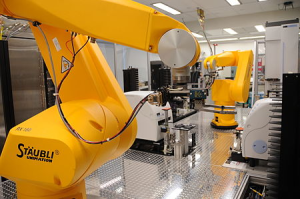
Let us begin with the first category. As mentioned previously when discussing the processes in conducting genetic modification, you need to first find the ideal traits; that is precisely what these tools allow researchers to do. A prominent example of this technology would be HTP, A.K.A. HTI or HTS; they all refer to the same thing – high throughput imaging/screening. High throughput automates the screening process, and is able to handle impossibly many samples quickly and precisely. Through the different types of imaging (RGB, fluorescent, thermal, etc.), HTP can screen for different traits (water use efficiency, leaf health, etc.). It is also able to categorize and group its findings, a function called “profiling”. Analysis of procured data can be done through separate software or databases.
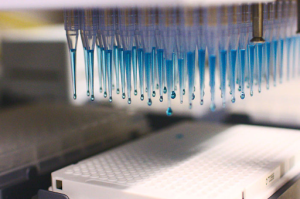
There is also MAS (marker assisted selection), GS (genomic selection), and HBB (haplotype based breeding). Explaining all of them in depth would be unnecessary time and effort when there are bound to be many other sources that cover the individual technologies with better professionalism. Therefore, I shall only go over a Cliff Notes version of each, and it will rest on the shoulders of you dear readers if you want to know any more.
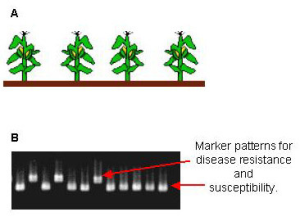
Firstly, MAS – along with the similar technologies: marker assisted backcrossing and marker assisted recurrent selection – uses molecular ‘markers’ as roundabout selection criteria for advantageous traits in breeding programs. It drastically reduces costs and time spent in comparison to older, traditional methods of cultivation and observation.
GS is another, more modern innovation in marker assisted technologies, one that is especially promising as it has in-built prediction models that mimic the uses of high throughput. This allows it to identify promising alleles and genes rather than rely on those previously identified. It has been found that pairing this breeding approach with high throughput ameliorates the precision and accuracy of phenotyping results, one of the largest barriers in modern genetic breeding.
The other genetic breeding approach is haplotype based breeding. This tactic treats genes as haplotypes rather than looking at the individual; meaning that they look at the predetermined natural groupings of genes instead of plotting the genes as singular pawns. After all, nothing in life is ever simple, and genes are no different. Genes hold the possibility of being linked to other genes; marry one and you bring the entire family in as well, nagging aunts and all.
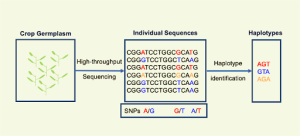
The second technology group pertains to tools that actually execute the “breeding” or editing; unlike the prior category, this one holds a massive range of different approaches.
Some notable examples are:
- CRISPR Cas9
- Electroporation
- Biolistics
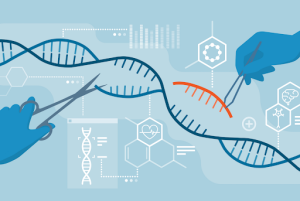
In genetic engineering technologies, there is CRISPR-Cas9 (clustered regularly interspaced short palindromic repeat), TALEN (transcription activator-like effector nucleases), and ZFN (zinc finger nuclease). CRISPR is probably the most well known in the general public, and it is actually derived from particular bacteria (Agrobacterium tumefaciens and Agrobacterium rhizogenes) which possessed the uncanny ability to directly transfer plasmid DNA into plant cells.
Then, we have electroporation, where high voltage pulses are given to a plant protoplast that induce the formation of pores in the cell membrane. This allows for the exchange of genetic material through these newly formed “doorways”, and then a whole plant is regenerated from the altered cells. It is a useful idea for crops that are outside the natural host range of the CRISPR bacteria.
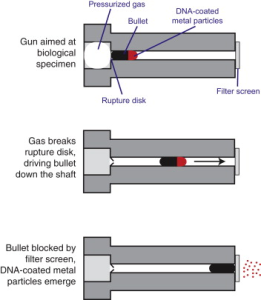
Finally, we are left with biolistics, a poetic marriage between cutting edge technology and high-class elegance. First, microscopic tungsten projectiles are coated with the to-be-inserted genetic material. Next, the tungsten needles are launched at the subject plant tissues, bombarding them with a hail of DNA. It must, however, be dutifully noted that each projectile’s size and entry velocity must be tailored to the target audience (recipient tissue type); after all, we, heaven’s know, wouldn’t want to kill them! Dramatics aside, this is a completely real method of shoving new genetic material into plant cells; I did not make any of it up.
Please, feel free to google it.
Benefits of Adopting Genetically Altered Crops
It’s not as if researchers are fooling around with the grants and funding they have fought so hard for in this field of science; whether it be increased yield, drought resistance, heat resistance, insect resistance, salinity resistance, herbicide resistance, or augmented nutritional value, these crops are a vital tool in fighting the ever worsening global climate, poverty and hunger crises.

One of the earliest GMO varieties is insect resistance (Bt, Bacillus thuringiensis, the bacteria in which an insect repellant gene was copied from) in cotton and corn. Just this small alteration caused a chain of positive effects. In Bt cotton specifically, anti-biotech campaigns argued that the introduction of the crop seeds would negatively affect small-holder farms in India. Results swung in the completely opposite direction; after 10 years, 90% of small-holders had adopted the seeds. Small-holders tended to distribute pesticides manually with a backpack spray and minimal protection, so it can be imagined what adverse effects chemical pesticides would have on their health over time. The inherent insect resistance in the GMOs allowed for sustainable reduction of insecticide use in adopters. Chemical insecticide use declined by 44%, while mean yield increased by 24%; the decrease in insecticide use improved overall health while the partial recovery of potential crop losses earned additional income, allowing for better food to be put on the table.

Then, there is the development of drought resistance and heat tolerance in crops. With the fast encroaching consequences of global warming, extreme weather and drought especially is becoming a larger concern for farmers, especially those located in warmer climates. Although drought is not something new, excessive pollution has undoubtedly worsened the severity and increased the repetitions of such natural disasters, thereby leaving many communities with grave food insecurity. Although genetically engineered crops are not a be all and end all solution, it most certainly serves as a lifesaving crutch for heavily impacted demographics to regain some semblance of footing.
Heat tolerance, drought resistance, salinity resistance, etc.; such traits are modern science’s efforts in adapting common crops to a hastily changing environment and a rapidly deteriorating world climate.

Moreover, genetically altered crops can increase food security and overall health. With cultivated traits that increase crop yield in spite of challenging climates, small-scale farmers and farmhands in developing countries, which usually belong to most poverty-stricken rungs of society, are able to earn more profit from their fields, as previously covered in the above paragraph about Bt cotton farmers. Not only that, the augmented production of food crops allow for more produce to enter the market and be distributed. 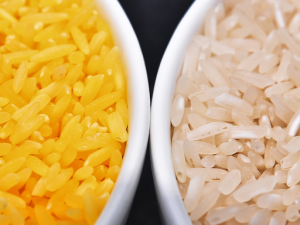
Certain food crops have been genetically engineered to be more nutritious as well, for example, the beta-carotene rich Golden Rice. GR(Golden Rice) is a bright yellow rice altered to contain high amounts of the precursor of vitamin A, beta-carotene. VAD is the world’s leading cause of preventable childhood blindness, and is sadly a common affliction in low income countries. Despite many educational programs teaching about VAD, this condition is one endemic to the dietary inflexibility of poverty, where the only affordable nutritional options do not come with the required amounts of the micronutrient. Unfortunately, many countries have still not permitted the distribution of Golden Rice despite the infinitesimally few drawbacks GR holds financially, societally, and health-wise. Due to this, tens of thousands of children under the age of 5 alone still die from VAD every year.
Which leads to the next topic:
Barriers Against Genetically Altered Crops
As I have been hinting at since the very beginning, for some strange reason, there is widespread paranoia against GMOs and GE crops. People, either misinformed or disinformed by their surroundings, are driven by their false impression of GMOs to lobby against these highly beneficial innovations. It truly sounds like a dystopian sci-fi setting, but that is the reality of the present world.
In the late 1970s, when this technology was still in its infancy, the scientists and researchers themselves suggested caution; for good measure, I believe, as it was literally opening a new door with no idea what may lay beyond. Now though, we are already a few decades into the field, and despite all the research that has gone into the potential adverse effects of genetic modification in crops, we have found very little to support the hysterical caution around GMOs. It’s as if the groups that perpetuate this fear have just taken this mindset from the late 70s, magnified it to exaggerated extents, and simply ran with it.
There is even a sad element where some well-known environmental NGOs have exploited the lobby against GMOs as a marketing campaign to rake in donations. Instead of looking at the prevalent research done on the topic, they stick to conjectures, paranoid what-ifs and the argument that there are other methods to completely shut down this one.
Well, that’s great and I’m sure there are, but we don’t exactly see them happening anytime soon, and what we do see happening is people dying. So why can we not give those actually experiencing VAD and poverty the agency to choose?
I am in no way proclaiming that GMOs or GE crops are absolutely safe and the messiah of our crumbling world, to be believed in without doubt; it is only logical to approach everything new with reasonable caution and to test out side effects. Even still, the sheer amount of nonsense that GMO and GE crops have to face in order to get approved is tiring for me to simply read. Most of Europe, for instance, is highly guarded against GMOs, only adopting some of the oldest varieties. There, ignoring approval for the market, getting the go-ahead to simply conduct field tests is an issue, and there are even cases where such studies have been vandalized.
Testing procedures for GMOs are spartan in their stringency, so intense that many traditionally bred crops on the market would not pass them. Due to this, usually only large companies can afford the costs of developing a GMO to the point of entering the market. Yet, even the GMOs that are able to enter the market still have to deal with negative public opinion. The scientists say it’s fine, the government says it’s fine, yet people choose to believe the gossip they read on social media instead. After all, everyone knows the real experts can only be found there. (sarcasm)
Due to the staunch stance of European countries, who are some of the highest importers of food globally, many large producing countries have been reluctant to accept as well, fearing that such genetically altered products will have less market value and lead to economic losses.
Putting aside all that, some less foolishly caused barriers against the implementation of GMOs is their cost. GMO seeds are more costly than ordinary seeds, and they cannot be reaped from the previous crop. Still, the costs are usually recovered from the more bountiful harvests.
GMOs are also not omnipotent, their effects are not miracles. They will not fit every farmer’s situation, so don’t expect them to. As independent as they may be in certain aspects, they still require care. A pest resistant crop does not entirely eliminate the use of pesticides.
When it comes to development and research, there are a few obstacles preventing further optimization of crops. One is the monochromatic gene structure of domestic crops after centuries and millennia of selective breeding. The resulting crop is a “perfected” species that holds little genetic variation, ergo few avenues for further improvement. Another roadblock would be the limitations of current phenotyping technology and pan-genome mapping data. This, in turn, constricts our ability to find the ideal variations that code for particular traits, hencely impeding the effectiveness and efficiency of research efforts.
Finally would be the previously touched upon point that genes can be linked together, which adds an undesirable complexity to genetic breeding. Traits that are desirable can often be mixed along with negative traits; the extra baggage would introduce a whole new can of worms.
Conclusion
 Contrary to childish opinions, there does not exist anything inherently bad; likewise, nothing is by nature good either. Just as genetic engineering has the potential to create something terrifying, it also holds a proven ability to help us.
Contrary to childish opinions, there does not exist anything inherently bad; likewise, nothing is by nature good either. Just as genetic engineering has the potential to create something terrifying, it also holds a proven ability to help us.
Now, I’m not going to tell some anecdote about walking down the grocery aisle and thinking critically about GMOs, but I at least hope this hasn’t gone in one ear and out the other. Hopefully, the hollow fear and bias against GMOs amongst the general public can change sooner rather than later.
______________________________________
Research Sources:
- https://www.britannica.com/topic/organic-food
- https://nap.nationalacademies.org/resource/23395/GE-crops-report-brief.pdf
- https://croplife.ca/facts-figures/gmos-in-canada/#:~:text=Genetically%20Modified%20Organisms%2C%20or%20GMOs,years%20to%20help%20produce%20crops.
- https://global.wf.com/hub_article/genetically-modified-vs-gene-editing/
- https://www.ncbi.nlm.nih.gov/pmc/articles/PMC6651533/#:~:text=Genetic%20modification%20for%20increasing%20drought,and%20survival%20in%20transgenic%20wheat.
- https://agbiosafety.unl.edu/education/summary.htm
- https://onlinelibrary.wiley.com/doi/10.1002/aepp.13044
- https://www.ncbi.nlm.nih.gov/pmc/articles/PMC7600178/#sec2-plants-09-01263
- https://www.sciencedaily.com/releases/2023/01/230110151038.htm
- https://www.sciencedaily.com/releases/2023/01/230116112626.htm
- https://reliefweb.int/report/world/becoming-drought-resilient-why-african-farmers-must-consider-drought-tolerant-crops
- https://www.pnas.org/doi/full/10.1073/pnas.2120901118
- https://allianceforscience.org/blog/2022/05/gmos-and-gene-editing-whats-the-difference/#:~:text=Gene%20editing%20tools%20are%20used,that%20can%20yield%20beneficial%20outcomes.
- https://journals.plos.org/plosone/article?id=10.1371/journal.pone.0064879
- https://www.who.int/data/nutrition/nlis/info/vitamin-a-deficiency
- https://pubmed.ncbi.nlm.nih.gov/22895769/#:~:text=Marker%2Dassisted%20selection%20(MAS),of%20interest%20in%20breeding%20programs.
Image sources (From top to bottom)
- https://www.thekitchn.com/grocery-shopping-perimeter-store-versus-middle-aisles-22923737
- https://www.purewow.com/food/healthiest-cereal
- https://www.nongmoproject.org/
- https://en.wikipedia.org/wiki/High-throughput_screening
- https://www.worldpharmatoday.com/articles/the-future-of-high-throughput-screening/
- https://passel2.unl.edu/view/lesson/a7b9c8f0ffa2/2
- https://www.nature.com/articles/s42003-021-02782-y
- https://www.the-scientist.com/news-opinion/crispr-gene-editing-prompts-chaos-in-dna-of-human-embryos-67668
- https://www.sciencedirect.com/topics/agricultural-and-biological-sciences/biolistics
- https://www.asce.org/publications-and-news/civil-engineering-source/civil-engineering-magazine/issues/magazine-issue/article/2022/01/how-to-make-infrastructure-more-resilient-against-climate-change
- https://geneticliteracyproject.org/2014/06/03/bt-cotton-huge-success-in-india-defies-anti-gmo-conspiracy-theories/
- https://geneticliteracyproject.org/2017/04/06/gm-rice-resists-drought-real-world-situations-developed-japanese-scientists/
- https://www.npr.org/sections/thesalt/2013/03/07/173611461/in-a-grain-of-golden-rice-a-world-of-controversy-over-gmo-foods
- https://www.sgs.com/en/our-services/health-and-nutrition/crop-science

